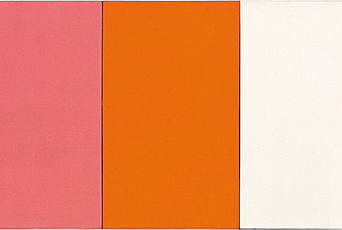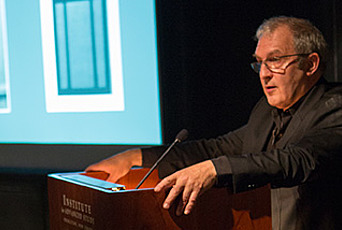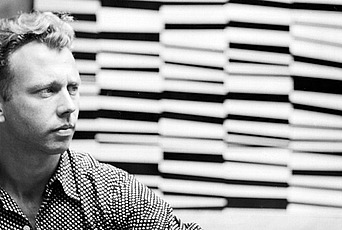Ellsworth Kelly’s Dream of Impersonality
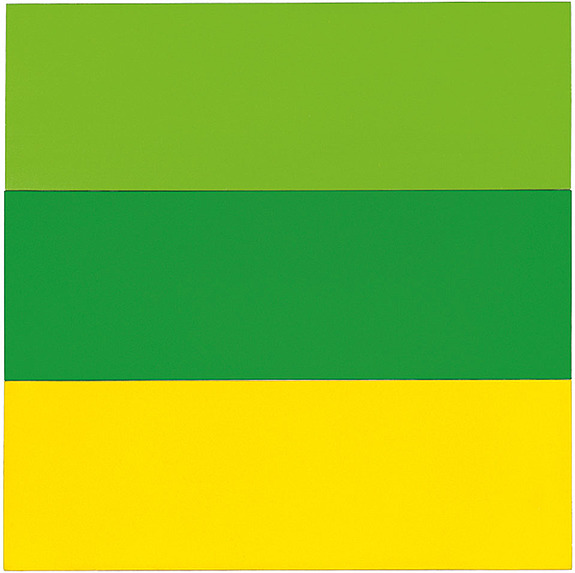
Ellsworth Kelly is one of the very first artists whose work I liked. Perhaps he was second, just after Piet Mondrian. One of the things I asked Kelly after we finally met and became friends, close to a quarter of a century ago, was why he had not answered a fan letter that I had written to him in my teens. He remembered the letter. He had received it at a time when he felt isolated, bypassed by a new generation of artists, and he had been struck by the fact that it came from a French teenager living in the middle of nowhere—he thought he might even have kept it. Since Kelly is a demon archivist, he found the darn letter, and he gave me a copy of it, which, unlike him, I immediately misplaced. But I read it, and it was humbling. First, because I realized I had misdated it in my memory, placing it three years too early—probably because the main event it described, my first encounter with his works, at a show of his lithographs at the Galerie Adrien Maeght in Paris, dated from even earlier to 1965. Second, because it was sheer adolescent drivel. At the time of the letter, Kelly was for me the purest representative of pure abstraction, whatever that is supposed to be.
This interpretation was in fact reinforced by a groundbreaking essay on the artist’s French years, written by John Coplans, then chief editor of Artforum. It was one of the first things I read when I arrived in America as an exchange student, in the summer of 1969. Coplans, in this excellent article, had said nothing of the “figurative” origin of the many works he was describing (and publishing for the first time). So I was utterly dumbfounded when I read the expanded, or rather rewritten, version of this text in the monograph he published only two years later, in 1971. I felt literally betrayed (by Coplans certainly but even more so by the artist himself) when I read about the “real” sources of the pictures, which had been reproduced in the book and which I had greatly admired. Too many art historians were always ready to deny the existence of abstraction, reading abstract paintings as if they were little rebuses one could simply decode just as the iconologist decodes the “hidden, textual meaning” of a Renaissance painting. I found it devastating that an artist whom I had always deemed a champion of abstraction would unabashedly admit that the three horizontal bands of a multipanel painting in fact “referred” to the colors of fields seen from a train (Train Landscape, 1952–53), that the black lines on a folded screen were the “rendition” of the cast shadows of a railing on a metallic stairway (La Combe II, 1950–51), or that his first masterpiece, earlier known as Construction—Relief in White, Grey and White, was now to be re-baptized Window, Museum of Modern Art, Paris (1949), since indeed it was the most exact duplicate, in reduced size, of one of the windows of the old, pre-Centre Pompidou, Musée National d’Art Moderne.
Feeling betrayed, I sulked for a while, like teenagers do, and then moved on to other things, forgetting about Kelly’s high treason but also not paying as much attention to his work as I should have for many years. Then, suddenly, while I was teaching at the Johns Hopkins University in Baltimore, I was plunged back into Kelly-land when visiting the touring retrospective exhibition of his drawings organized by Diane Upright, which came to the Baltimore Museum of Art in 1988. It is then that I really discovered Kelly’s early graphic production. My teenage militancy about “pure abstraction” had vanished long ago (I had become an art historian in the meantime, and I knew by then that this was a very inept notion). Seeing the drawings, and thus being offered a glimpse at the process of formation of the paintings, I realized that the “figurative” source of many of the French pictures did not amount to a stylization or distillation of a spectacle seen in the world. I did not understand exactly why this was so, but I was determined to find out.
In late 1989–early 1990, I was asked to write an essay for the catalogue of the exhibition of Kelly’s French years (1948–54) at the National Gallery of Art in Washington and the Galeries du Jeu de Paume in Paris—an invitation I immediately accepted. This was soon followed by a first visit to Kelly’s studio in Spencertown (upstate New York), and then many others, and it is during the yearlong, intermittent discussion we conducted on his Parisian works, that I gradually came to understand the function of the “figurative” origin of many of the French paintings and reliefs—how it had nothing to do with representation but rather with a non-compositional system, which I call the “transfer,” and, in turn, how this relates to other non-compositional strategies in his work of this period. In short, I was finally able to absolve Ellsworth from the “high crime and misdemeanor” I had been accusing him of as a teenage prosecutor. The intellectual, visual, and affective pleasure I took in granting this absolution was only the beginning of a wonderful friendship.
_________________________________
I think there is no better introduction to Kelly’s work than his earlier years in Paris, especially when it comes to understanding why things that look apparently very simple are in fact much more complex than they seem. This is something that we easily accept from science—no one doubts that the hyper-simple equation E=mc2 is the tip of an immensely complicated iceberg—but we usually have a harder time accepting it from art.
Kelly arrived in Paris in October 1948, on the G.I. Bill. He had studied two years at the Boston Museum School and had grown fed up with painting nudes in live model classes day in and day out. Ironically, he had to register with the École des Beaux-Arts in order to get his monthly check, and paint one more nude to be accepted: he did it effortlessly, but that was his farewell to the traditional course and he never set foot again in the school (where, it was his good luck, no one took attendance!). He had grown fascinated by medieval art while in Boston, and his first months in France were spent visiting as many sites of Romanesque architecture as he could, on a limited budget, or in taking refuge from the cold at the Byzantine Institute, an outpost from Harvard located next to his hotel, where he looked at illustrated manuscripts as well as reports about the conservation of Hagia Sophia’s mosaics.
Kelly soon began exploring ways in which he could make a painting without having to invent a composition, without having to involve his subjective taste or agency, without having to decide where to place things and in which order on his canvas. Now, there are several reasons why a young artist working in Europe at this moment of history should want to do that, which amounts to deflating his ego. As I see it, it has a lot to do with his disaffection for the romantic and modernist conception of art as self-expression, as a marker of one’s authorship. Three factors have to be taken into consideration here. One is personal and has directly to do with Kelly’s interest in medieval and, in particular, Romanesque architecture, which he took to be the work of utterly anonymous craftsmen: it is a different kind of romanticism that is at work here. The two other factors are contextual. First, World War II had just come to a close. In the immediate aftermath of the Holocaust and Hiroshima, it comes as little surprise that young painters would ask: what does it mean to be an artistic subject, an author, at the very moment when the humanity of any individual has been cast in doubt by the massive demonstration of the inhumanity of our whole species? Second, any artist trying to affirm his selfhood in postwar Paris could not but have been sensitive to the fact that the road was blocked by a monster, by a kind of minotaur that was eating alive anyone approaching, a monster that had already “invented everything,” or so it was thought at the time. This monster was Picasso and his gigantic output of perhaps as many as 50,000 images had claimed as his all the space of inventiveness. If you started out by erasing yourself, your personality, your genius, and the like, if you started out by pretending you were not there, nobody would be able to come and say that Picasso did it better. There was one thing Picasso did not know how to do and that was how to erase himself, how not to invent, how not to compose.
So, throughout his stay in France, Kelly would systematically explore several strategies of not–inventing, of not–composing, of not taking decisions. He applied himself to “invent ways not to invent,” and he found out that the number of possibilities were limited. He came up with five, although he fully exploited only four at the time (keeping in reserve the fifth, which would only become his landmark much later). The first, “transfer,” which I mentioned earlier, is very simple: rather than composing ex nihilo, the artist selects in the world at large a patterned and flat surface that he reproduces as such on his canvas. He does not represent it, but transfers it, as one would do a rubbing of a tombstone inscription (this technique was used by archaeologists before the invention of photography—it is at least 2,000 years old in China). Although the line separating a representation and a transfer is materially very thin, it is conceptually a major one. In addition to transfer, there would also be chance (November Painting, 1950), the grid (Color for a Large Wall, 1951), and the monochrome panel as unit (Painting for a White Wall, 1952). The fifth one, which I call the “silhouette” (White Plaque, 1951–55), encompasses his numerous shaped canvases and many reliefs from the early seventies to this day, as well as many of his prints, such as the ones that hang in the Institute’s Dilworth Room. Now these non-compositional strategies are not unique to Kelly (though he was certainly the first to use the “transfer” so forcefully), but what is unique to him is that he used them all in Paris in relatively short succession. They yielded formal results that were so diverse—and Kelly was so productive—that the Ariadne’s thread of non-compositionality that linked almost all the works he produced in France was completely missed, even by his greatest admirers, until quite recently.
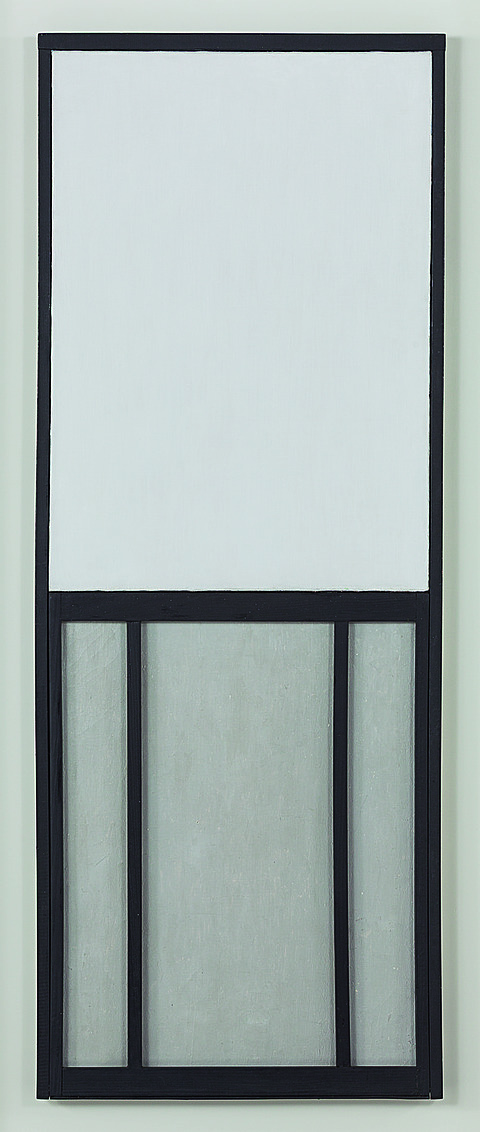
Kelly’s diversity does not mean that he ever abandoned a strategy after having stumbled upon the next one as its dialectical offspring. Just as he kept my teenage fan letter, Kelly keeps everything in store, or on his back burner, happy to return to anything he suddenly fancies in his immense repertoire, whenever he feels like it. A painting, or rather a relief, dating from 2002, is based on a piece of folded paper he picked up in the streets around 1955. A drawing in pencil, dating from 1978, is the source of a green shaped canvas in 1986, which he then took as a basis for several prints in 2001 (some of which are in the Dilworth Room), and again for a two panel relief (as late as last year). Kelly’s remarkably free attitude toward his past oeuvre, this capacity to revive any of it at any moment, without any chronological consideration for development, or so it seems at first at least, is something that has often puzzled critics. But such a puzzlement, which is closely linked to the diversity of Kelly’s production in France, ought to disappear once we understand why these early years are so crucial: it is the time when the artist elaborated his fundamental matrix, to use the expression used by my friend and fellow Kelly admirer Benjamin Buchloh. This matrix is the sum of the four and then five strategies that I identified. One could even say that it is the product rather than the sum of these strategies, for the taxonomy I proposed is porous.
_________________________________
In hindsight, it might seem very strange that Mondrian, the twentieth-century master of compositional balance if there is one, at least during the “classical phase” of neo-plasticism (until 1932), would have been invoked as the pictorial mentor of young Kelly, the enfant-terrible of non-composition. But the reason might be that the production of both artists faced—and still faces, to some extent—a common misinterpretation in which the abstractness of their works is denied, in which their works are seen as figurative or representational. Kelly’s works enact a very different concept of abstraction than Mondrian’s since it can encompass the transfer within its matrix; these works are essentially abstract nevertheless, and certainly not representational.
But even for works that contain some imagery, it is often a quasi-random secondary effect, a byproduct of Kelly’s various work processes. Tricot and Maillot Jaune of 1957, for example, are based on a sketch of what Kelly was seeing, while sitting in an armchair, through the aperture of a window in his studio. He remembers it as an advertisement for Nickerbocker bier on a wall on the other side of the street (once again it is a flat pattern that caught his eye, a pattern he could easily transfer). It is only after the fact that he associated these shapes with the image of a tank-top and thought the association droll enough to convey it in the title of these two works. In other words, Kelly does not need imagery, but he does not shun it either: the grid is as much already-made (as a common trope of modernism) as the window of the Musée National d’Art Moderne. As already-made material, they all are grist for his voracious mill, fuel for his production engine, the matrix, which is an endlessly open system. So open, in fact, that it is often something in the world at large that suddenly begins to look Kelly-like. Any work of art by another artist (as well as a past one by himself, but that is rarer) can be submitted to the same dissolution of its identity and become prey to the matrix. Visiting an exhibition of paintings with Kelly is often to be alerted by him to this or that particular shape (generally interstitial) in a picture, or to this or that color combination. These are shapes or color combinations that one has failed to notice because, in order to perceive them one has to forget the image—something Kelly can do effortlessly, because the real background against which these shapes and color combinations stand out for him is not the picture from which his perception excerpts them but the vast mental storage in which he keeps everything his matrix has produced, including, as I mentioned before, tiny little sketches made years before for paintings, reliefs, or sculptures that were not realized. I remember specifically joking with him, while visiting an exhibition of van Gogh’s portraits in his company and hearing him associate a detail of one of the canvases on view to one of his recent works, that he should make sure to remember that van Gogh had not copied him. (Though in fact one could say that van Gogh is in debt to Kelly—not van Gogh the long-dead man, but van Gogh the oeuvre as we see it now—benefiting from Kelly’s work as well as from that of many other artists of the twentieth-century. But that is the story of modernism as a whole.)
_________________________________
As I mentioned at the outset, Kelly was at first shy about revealing the “sources” of his transfers—as a young, insecure artist, he felt that people would not understand his quest for impersonality, for non-agency. Then, during the heyday of Minimalism, in the 1960s, and in order to differentiate himself from the younger artists of this movement, he revealed his method (in the Coplans book), which eventually led to the misconception that is rampant today (to the artist’s regret) and which I am trying to fend off. Was it a mistake, via Coplans, to have brought us in the loop? I do not think so, for in revealing the sources of his transfers, Kelly gave us the opportunity to understand that his quest had nothing to do with representation but with denaturalization, defamiliarization. The transfer is an index, in the semiotic conception of the term—it implies a relation of co-presence, at some point, between the sign and its referent (just as a footprint in the sand tells that a human being has been there). But in Kelly’s transfers this referenciality of the sign is denied or at least not considered of the slightest interest. He likes shadows or reflections for their odd shapes, and the fact that these shapes are already-made, but is not concerned by the possibility of inferring from them what it is that they are shadows or reflections of.

This severing of the physical link between referent and indexical sign—which amounts to the splitting of the indexical sign from its usual function of communication—is what happens almost by itself in the particular mode of transfer that is cropping, as in Maillot Jaune and Tricot. Kelly’s use of cropping has nothing to do with this paean to the subjective and transitory nature of experience—especially since, as one must always remember, what he crops is always flat (if it involves the visual field, and not, as is most often the case, a particular surface in it, it is the visual field as perceived with only one eye). More importantly, perhaps, is the fact that the cropping is itself an involuntary accident, almost like a hiccup or a Freudian slip of the tongue—the sudden “apparition” of a shape as it strikes a chord for being unrecognizable, for being recognized as something the artist consciously knows it is not. Either this shape echoes something already caught in the web of the matrix, or it appeals to Kelly for its potentiality as a score for a new piece, but a score whose material performance in the real world, an “already-made” unperceived by anyone but him, is only the material proof that it can, indeed, exist on its own. The process by which the “already-made” shape is suddenly available to Kelly—while it escapes most of us—is one of defamiliarization, of what the Russian formalists called ostranenie. It came upon the young Kelly years before he became an artist, and the strong memories he has about several childhood experiences is perhaps the reason his work remains so fresh. I’ll quote two such memories, but there are many more:
I remember that when I was about ten or twelve years old I was ill and fainted. And when I came to, my head was upside down. I looked at the room upside down, and, for a brief moment I couldn’t understand anything until my mind realized that I was upside down and I righted myself. But for the moment that I didn’t know where I was, it was fascinating. It was like a wonderful world.
And this, recalled by Hugh Davies, Director of the San Diego Museum of Contemporary Art:
On Halloween night in 1935, in rural Oradell, New Jersey, the twelve-year-old Ellsworth Kelly was trick-or-treating with friends in their neighborhood after dark. Upon approaching a house from a distance, he said: “I saw three colored shapes—red, black, and blue—in a ground-floor window. It confused me and I thought: ‘What is that?’ When I got close to the window, it was too high to look in easily and I didn’t want to be peeking. I was very curious and came at the window obliquely, and chinned myself up, only to look into a normal furnished living room. When I backed off to a distance, there it was again. I now realize that this was probably my first abstract vision—something like the three shapes in your Red Blue Green painting.”
The cropped view of a bourgeois interior seen by the young Kelly as peeping Tom is not the “source” of the San Diego painting. But these recollections offer perfect examples of the kind of defamiliarization allowed by the matrix, a kind of defamiliarization wonderfully analyzed by Maurice Merleau-Ponty in the Phenomenology of Perception, when he wrote that “to put an object upside down is to remove its signification from it” and noted how difficult it is, when walking along an avenue, “to see the spaces between the trees as things and the trees themselves as background.”
Of course, Kelly’s initial quest for impersonality ultimately failed—nothing is more recognizable than a work of his, and nothing is more idiosyncratic than what he picks up as foil for his art in the spectacle of the world at large. In doing so, he teaches us that there are many more ways to see than we are apt to admit. His art, among other things, is an injunction to explore in our own terms an expanded field of vision.
